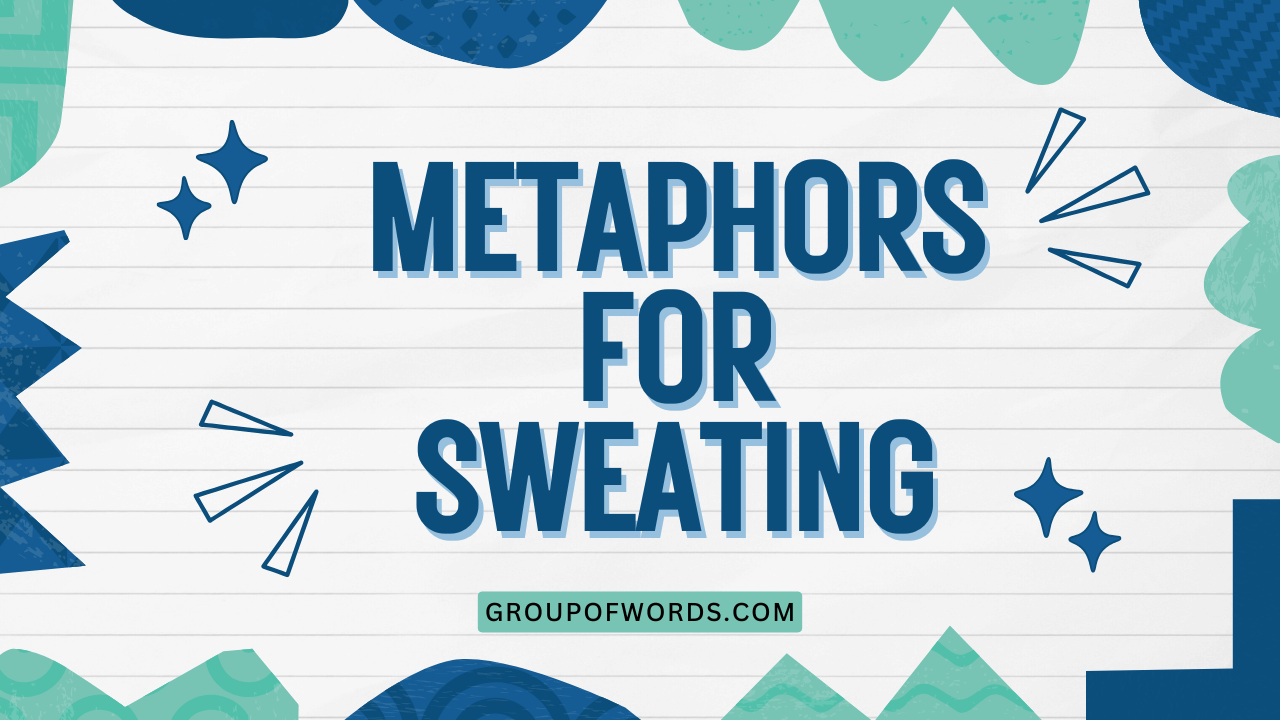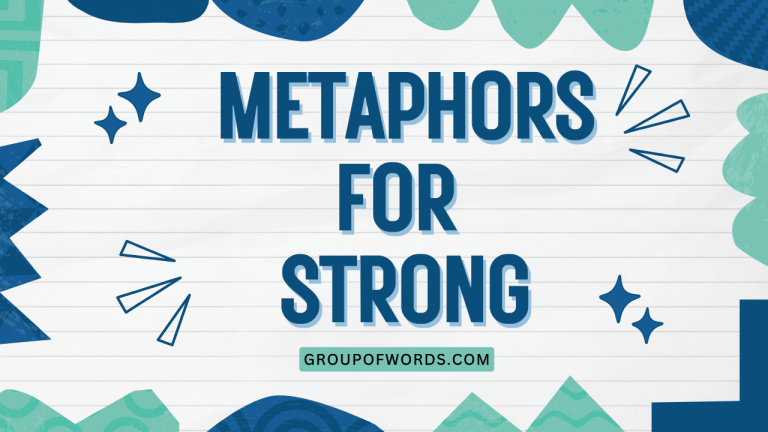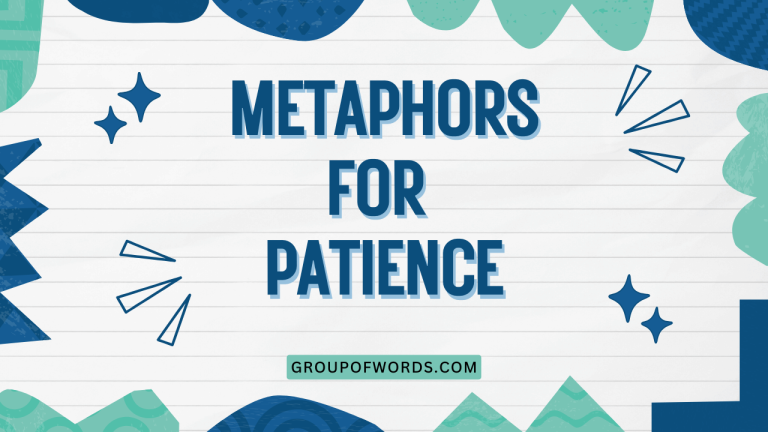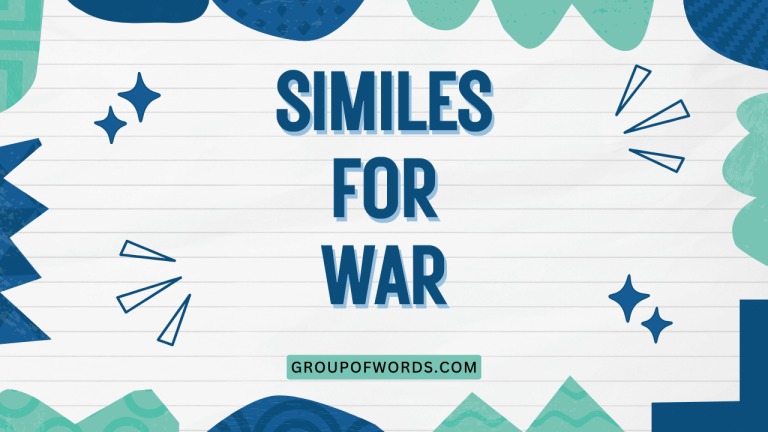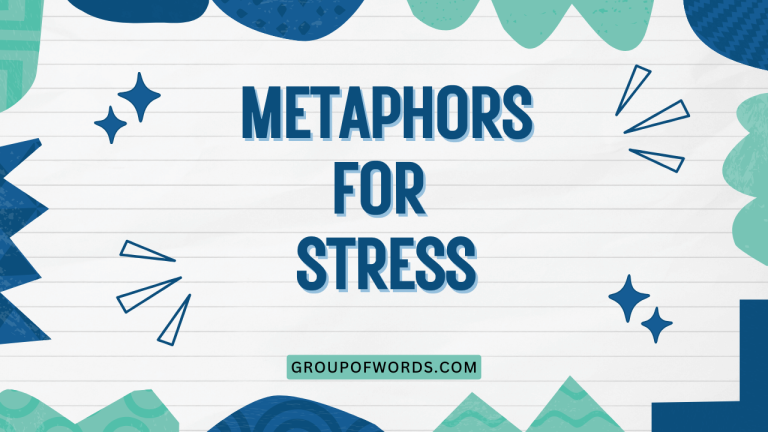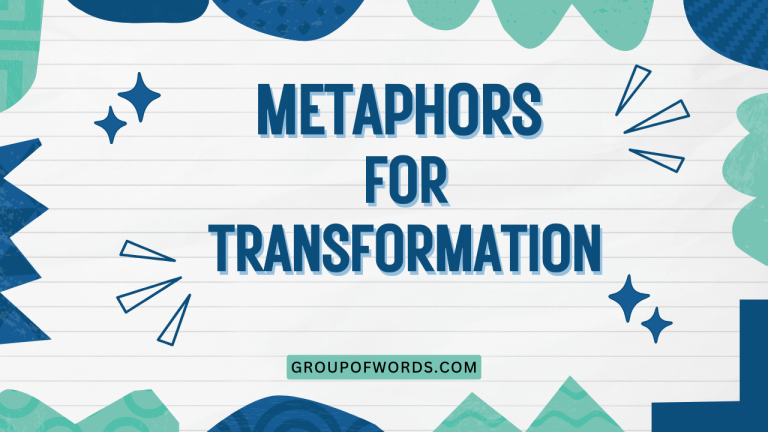Sweating Metaphors: A Guide to Figurative Language
Understanding metaphors is crucial for mastering the nuances of the English language. Metaphors allow us to express complex ideas and emotions in vivid and relatable ways.
This article delves into the fascinating world of metaphors for sweating, exploring how writers and speakers use figurative language to describe this common human experience. Whether you’re an ESL student, a creative writer, or simply someone who enjoys language, this guide will enhance your understanding and appreciation of metaphorical expressions.
This article is designed to provide a comprehensive overview of sweating metaphors, covering their definitions, structures, types, usage rules, and common mistakes. Through numerous examples and practice exercises, you’ll gain the ability to recognize, interpret, and use these metaphors effectively.
This knowledge will not only improve your comprehension of English literature and conversation but also enrich your own writing and speaking skills.
Table of Contents
- Introduction
- Definition of Metaphor
- Sweating: A Biological Overview
- Structural Breakdown of Sweating Metaphors
- Types of Sweating Metaphors
- Examples of Sweating Metaphors
- Usage Rules for Sweating Metaphors
- Common Mistakes with Sweating Metaphors
- Practice Exercises
- Advanced Topics in Metaphorical Usage
- Frequently Asked Questions (FAQ)
- Conclusion
Introduction
Metaphors are figures of speech that compare two unlike things without using “like” or “as.” They are essential tools in communication, allowing us to convey abstract ideas in more concrete and relatable terms. When we talk about sweating, we often reach for metaphors to describe the intensity, cause, or emotional context of the experience.
This article will explore the rich variety of metaphors used to describe sweating, providing you with the knowledge and skills to understand and use them effectively.
This article is tailored for English language learners, writers, and anyone interested in enhancing their understanding of figurative language. By the end of this guide, you will be able to identify different types of sweating metaphors, understand their nuances, and use them confidently in your own writing and speech.
The exercises included will reinforce your learning and help you avoid common mistakes.
Definition of Metaphor
A metaphor is a figure of speech that directly compares two unrelated things, asserting that one thing is another, without using words such as “like” or “as.” The purpose of a metaphor is to create a vivid image or convey a deeper meaning by transferring qualities from one concept to another. Metaphors are powerful tools for enriching language and making it more engaging.
Metaphors function by highlighting similarities between two seemingly different concepts. This comparison allows the listener or reader to understand the target concept (in our case, sweating) in a new and more insightful way.
The effectiveness of a metaphor lies in its ability to evoke emotions, create imagery, and simplify complex ideas. For example, saying “He was drowning in sweat” doesn’t literally mean he was submerged in sweat, but it conveys the feeling of being overwhelmed by it.
Sweating: A Biological Overview
Sweating, also known as perspiration, is the body’s natural mechanism for regulating temperature. When the body gets too hot, sweat glands release a watery fluid onto the skin’s surface.
As this fluid evaporates, it cools the body down. Sweating can be triggered by physical activity, high temperatures, stress, anxiety, or certain medical conditions.
From a biological perspective, sweating is a purely physiological response. However, the experience of sweating is often intertwined with emotions and social contexts.
For example, someone might sweat profusely during a job interview due to nervousness, or after a strenuous workout as a sign of exertion. These associations make sweating a rich subject for metaphorical expression, as we attempt to capture the physical and emotional dimensions of the experience.
Structural Breakdown of Sweating Metaphors
Sweating metaphors typically consist of two main components: the tenor and the vehicle. The tenor is the subject being described (in this case, sweating), and the vehicle is the object or concept used to describe it. The connection between the tenor and the vehicle creates the metaphorical meaning.
For instance, in the metaphor “Sweat poured like a river,” the tenor is “sweat,” and the vehicle is “a river.” The metaphor works because it draws a comparison between the continuous flow of sweat and the continuous flow of a river. Understanding this structure helps in analyzing and interpreting different types of sweating metaphors.
The more vivid and unexpected the vehicle, the more impactful the metaphor usually is.
Types of Sweating Metaphors
Sweating metaphors can be categorized based on the types of objects, phenomena, or concepts they use as vehicles. Common categories include animalistic, weather-related, emotional, object-based, and liquid-based metaphors.
Animalistic Metaphors
Animalistic metaphors compare sweating to the actions or characteristics of animals. These metaphors often emphasize the intensity or uncontrolled nature of sweating.
Weather Metaphors
Weather metaphors use weather phenomena such as rain, storms, or heatwaves to describe sweating. These metaphors often highlight the abundance or intensity of the sweat.
Emotional Metaphors
Emotional metaphors link sweating to specific emotions, such as fear, anxiety, or relief. These metaphors emphasize the emotional triggers and consequences of sweating.
Object Metaphors
Object metaphors compare sweating to inanimate objects, often focusing on the way sweat appears or behaves. For example, comparing sweat to beads or diamonds.
Liquid Metaphors
Liquid metaphors describe sweating in terms of other liquids, such as rivers, oceans, or waterfalls. These metaphors emphasize the volume and flow of sweat.
Examples of Sweating Metaphors
The following sections provide detailed examples of sweating metaphors, categorized by type. Each example is designed to illustrate how the metaphor works and what it conveys.
Animalistic Metaphor Examples
Animalistic metaphors often convey a sense of primal, uncontrolled sweating, linking the physical response to a feeling of being overwhelmed or driven by instinct.
| Metaphor | Explanation |
|---|---|
| He was sweating like a pig. | This metaphor suggests profuse sweating, often associated with exertion or discomfort. |
| She was sweating like a racehorse after the final stretch. | This implies intense sweating following a period of high physical exertion. |
| He sweated bullets during the interrogation. | This metaphor conveys extreme fear and anxiety, as if sweat is a painful projectile. |
| The team was sweating blood to meet the deadline. | This suggests extreme effort and sacrifice, implying that the task was physically and emotionally draining. |
| He was sweating like a dog on a hot summer day. | Similar to “sweating like a pig,” this emphasizes excessive sweating due to heat. |
| She felt like a caged animal, sweating with nervous energy. | This links sweating to feelings of confinement and anxiety. |
| He was sweating like a trapped rat in a corner. | This metaphor evokes feelings of desperation and fear. |
| The boxer was sweating like a beast in the ring. | This implies raw, physical exertion and intensity. |
| She was sweating like a drenched bird in the rain. | This suggests vulnerability and being overwhelmed. |
| He was sweating like a nervous cat before the vet visit. | This conveys anxiety and apprehension. |
| The athlete was sweating like a stallion after the competition. | This suggests intense physical exertion and power. |
| She was sweating like a frightened rabbit in the headlights. | This metaphor evokes feelings of fear and helplessness. |
| He was sweating like a cornered wolf, ready to fight or flee. | This implies a mix of fear and aggression. |
| The performer was sweating like a peacock under the spotlight. | This suggests nervousness combined with a desire to impress. |
| She was sweating like a worker ant carrying a heavy load. | This conveys a sense of tireless effort and burden. |
| He was sweating like a bear emerging from hibernation. | This implies a return to activity after a period of rest. |
| The dancer was sweating like a swan gliding on water. | This suggests grace and effort combined. |
| She was sweating like a fish out of water. | This metaphor evokes a feeling of being uncomfortable and out of place. |
| He was sweating like a newborn foal trying to stand. | This implies vulnerability and struggle. |
| The student was sweating like a parrot trying to mimic a foreign language. | This suggests difficulty and effort in learning. |
| She was sweating like a fox caught in a trap. | This metaphor conveys feelings of being stuck and anxious. |
| He was sweating like a hound on the scent of its prey. | This implies focused and intense effort. |
| The chef was sweating like a busy bee in the kitchen. | This suggests constant activity and hard work. |
| She was sweating like a chameleon trying to blend in. | This metaphor evokes feelings of trying to fit in and adapt. |
Weather Metaphor Examples
Weather metaphors often emphasize the volume, intensity, or cause of sweating, drawing parallels between the body’s response and natural atmospheric phenomena.
| Metaphor | Explanation |
|---|---|
| Sweat poured down his face like rain. | This emphasizes the continuous and heavy flow of sweat. |
| She was drenched in sweat, as if she’d been caught in a downpour. | This suggests being completely soaked in sweat. |
| The sweat was beading on his forehead like morning dew. | This implies small, glistening droplets of sweat. |
| He felt a storm of sweat break out across his back. | This suggests a sudden and intense onset of sweating. |
| The heatwave of sweat washed over her. | This conveys a feeling of being overwhelmed by heat and sweat. |
| His shirt was soaked with sweat, a testament to the scorching summer sun. | This links sweating directly to the intense heat of the sun. |
| She was sweating buckets in the humid air. | This metaphor illustrates profuse sweating in response to humidity. |
| He could feel the sweat trickling down his spine like a cold rain. | This emphasizes the sensation of sweat running down the back. |
| The sweat was gleaming on his skin like sunlight on water. | This suggests a shimmering and reflective quality of sweat. |
| She was sweating under pressure, like a cloud about to burst with rain. | This implies that stress is causing the sweating. |
| He was sweating like the aftermath of a tropical storm. | Suggests a large quantity of sweat, similar to floodwaters. |
| She was sweating like a greenhouse in July. | Emphasizes the intensity of the heat and resulting sweat. |
| He was sweating like a desert oasis after a rare rain. | Implies a welcome, albeit excessive, release of sweat. |
| She was sweating as if she’d just run through a monsoon. | Suggests extremely heavy and thorough soaking. |
| He was sweating like a sauna after a long day. | Conveys the feeling of being in an extremely hot and humid environment. |
| She was sweating like a glass of iced tea on a summer porch. | Implies condensation-like sweating due to temperature differences. |
| He was sweating like a freshly thawed glacier. | Suggests a slow but steady and significant amount of sweat. |
| She was sweating like a spring thaw after a long winter. | Implies a relieving and abundant release. |
| He was sweating like the eye of a hurricane, a calm amidst chaos. | Suggests a surprising amount of sweat despite external appearances. |
| She was sweating like a rainforest after a sudden shower. | Emphasizes the lush and abundant result of the sweating. |
| He was sweating like a humid jungle. | Conveys a feeling of being surrounded by moisture. |
| She was sweating like a leaky faucet in winter. | Implies constant and annoying sweating. |
| He was sweating like a freshly watered lawn. | Suggests a healthy and natural release of sweat. |
| She was sweating like a puddle reflecting the sun. | Emphasizes the reflective and noticeable quality of the sweat. |
Emotional Metaphor Examples
Emotional metaphors highlight the connection between sweating and feelings such as fear, anxiety, relief, or excitement. They provide insight into the emotional state driving the physical response.
| Metaphor | Explanation |
|---|---|
| Fear made him sweat bullets. | This emphasizes the intense fear causing the sweating. |
| Anxiety poured sweat down her back. | This suggests the overwhelming anxiety leading to sweating. |
| Relief washed over him, and the sweat began to cool. | This implies that the sweating was caused by stress, which is now subsiding. |
| He sweated anticipation as he waited for the results. | This links sweating to feelings of excitement and nervousness. |
| The pressure of the situation squeezed sweat from his pores. | This suggests that the stress is causing the sweating. |
| His nerves were a faucet, dripping sweat down his forehead. | This emphasizes the constant and uncontrollable nature of nervous sweating. |
| She was swimming in a sea of sweat, fueled by panic. | This links sweating to feelings of being overwhelmed by panic. |
| The weight of expectation made her sweat with dread. | This suggests that the pressure is causing feelings of fear and sweating. |
| He wore his sweat like a badge of honor after the intense workout. | This implies pride and accomplishment. |
| The cold sweat of terror gripped him. | This emphasizes the chilling fear causing the sweating. |
| She was sweating out her frustrations on the treadmill. | This suggests using physical activity to relieve stress. |
| He felt the sweat of embarrassment prickle his skin. | This links sweating to feelings of shame and awkwardness. |
| She could taste the bitter sweat of defeat. | This metaphor evokes the feeling of disappointment and failure. |
| He was drowning in the sweat of his own lies. | This implies that guilt is causing excessive sweating. |
| She felt the sweat of determination dripping from her brow. | This links sweating to feelings of resolve and perseverance. |
| He was sweating out the toxic stress of the day. | This suggests using sweating as a way to detoxify from stress. |
| She felt the sweat of triumph glistening on her skin. | This links sweating to feelings of victory and accomplishment. |
| He could smell the acrid sweat of fear in the air. | This emphasizes the pungent smell associated with nervous sweating. |
| She was sweating with the effort of holding back tears. | This implies that emotional suppression is causing sweating. |
| He felt the sweat of regret soaking through his shirt. | This suggests that remorse is causing excessive sweating. |
| She was sweating bullets of worry over her sick child. | This metaphor conveys intense worry and anxiety. |
| He felt the sweat of anticipation tickle his skin before the big game. | This links sweating to feelings of excitement and eagerness. |
| She was sweating out the negativity with each drop that fell. | This suggests using sweating as a way to cleanse oneself of negative emotions. |
| He felt the sweat of desperation clinging to him like a second skin. | This emphasizes the overwhelming feeling of hopelessness. |
Object Metaphor Examples
Object metaphors compare sweating to inanimate objects, often focusing on the way sweat appears or behaves, such as its texture, shape, or movement.
| Metaphor | Explanation |
|---|---|
| Sweat beaded on his forehead like pearls. | This suggests small, round droplets of sweat. |
| Her skin glistened with sweat, like polished glass. | This implies a smooth, shiny surface of sweat. |
| Sweat dripped from his chin like melting wax. | This suggests a slow, viscous flow of sweat. |
| His shirt was plastered to his back with sweat, like a second skin. | This implies that the shirt is soaked and clinging tightly to the body. |
| Sweat ran down her face in rivulets. | This suggests small streams of sweat. |
| His sweat-soaked clothes felt like he was wearing armor. | This conveys the feeling of being weighed down and protected by sweat. |
| The sweat on his brow was a testament to his hard work, a glistening trophy. | This implies pride and accomplishment. |
| Her sweat-soaked hair was like a wet rope clinging to her neck. | This suggests that the hair is heavy and saturated with sweat. |
| His sweat was a shimmering film on his skin. | This implies a thin, reflective layer of sweat. |
| She was sweating like a leaky pipe. | Implies constant and uncontrollable sweating. |
| Sweat was running down his temples like melted silver. | Suggests a valuable and noticeable stream of sweat. |
| Her forehead was dotted with sweat, like a field of tiny crystals. | Emphasizes the sparkling and delicate appearance of sweat. |
| His sweat-stained shirt was a roadmap of his exertion. | Implies that the sweat patterns tell a story of hard work. |
| She was sweating like a squeezed sponge. | Suggests a complete and thorough release of sweat. |
| Sweat was clinging to his eyelashes like morning frost. | Emphasizes the delicate and noticeable presence of sweat. |
| Her sweat-soaked gloves were like a second pair of hands. | Implies a close and intimate connection to the exertion. |
| His sweat was a lubricant, easing his movements. | Suggests that the sweat is helping him perform. |
| She was sweating like a broken sprinkler. | Implies uncontrolled and widespread sweating. |
| Sweat was beading on his nose like tiny dewdrops. | Emphasizes the small and delicate appearance of the sweat. |
| Her sweat-streaked makeup was a testament to her effort. | Implies that the sweat is a sign of hard work and dedication. |
| His sweat was a salty glaze on his skin. | Suggests a noticeable and coating layer of sweat. |
| She was sweating like a melting candle. | Implies a slow and steady diminishment. |
| Sweat was gathering in the hollow of his throat like a small pool. | Emphasizes the gathering and pooling of sweat. |
| Her sweat-soaked clothes were like a heavy shroud. | Implies a feeling of being weighed down and confined. |
Liquid Metaphor Examples
Liquid metaphors describe sweating in terms of other liquids, emphasizing the volume, flow, or intensity of the sweat. These metaphors often evoke a sense of being overwhelmed or consumed by sweat.
| Metaphor | Explanation |
|---|---|
| Sweat poured from him like a waterfall. | This emphasizes the abundant and continuous flow of sweat. |
| He was swimming in a pool of his own sweat. | This suggests being completely surrounded and soaked in sweat. |
| Sweat streamed down her face like a river. | This implies a continuous and significant flow of sweat. |
| He felt like he was bathing in sweat. | This suggests being completely immersed in sweat. |
| The sweat was a deluge, washing over him. | This emphasizes the overwhelming quantity of sweat. |
| His body was a fountain of sweat, constantly overflowing. | This implies a continuous and abundant release of sweat. |
| She felt like she was drowning in sweat, gasping for air. | This suggests being overwhelmed and suffocated by sweat. |
| He was awash in sweat, his clothes clinging to him like a second skin. | This implies being completely soaked and uncomfortable. |
| The sweat was a torrent, rushing down his back. | This emphasizes the strong and forceful flow of sweat. |
| She felt like she was being baptized in sweat. | This suggests a cleansing and purifying effect of sweating. |
| He was leaking sweat like a broken dam. | Implies an uncontrollable and abundant release of sweat. |
| She felt like her body was a reservoir overflowing with sweat. | Emphasizes the large quantity and excess of sweat. |
| He was marinating in his own sweat. | Suggests being thoroughly soaked and infused with sweat. |
| She felt like she was being hosed down with sweat. | Implies a forceful and overwhelming soaking. |
| He was secreting sweat like a rainforest teems with moisture. | Suggests a lush and abundant production of sweat. |
| She felt like she was being submerged in a sea of sweat. | Emphasizes the overwhelming and encompassing nature of the sweat. |
| He was dispensing sweat like a leaky faucet. | Implies a constant and annoying dripping of sweat. |
| She felt like her pores were miniature springs gushing with sweat. | Emphasizes the natural and abundant flow of sweat. |
| He was exuding sweat like a saturated sponge. | Suggests a complete and thorough release of sweat. |
| She felt like she was being lacquered with sweat. | Implies a smooth and noticeable coating of sweat. |
| He was oozing sweat from every pore. | Emphasizes the widespread and pervasive sweating. |
| She felt like she was being pickled in sweat. | Suggests a thorough and transformative soaking in sweat. |
| He was sweating like a cask of wine left in the sun. | Implies a slow and steady seepage of sweat. |
| She felt like she was being varnished with sweat. | Emphasizes the shiny and protective layer of sweat. |
Usage Rules for Sweating Metaphors
When using sweating metaphors, it’s important to ensure that the comparison is both meaningful and appropriate. Here are some guidelines to follow:
- Clarity: The metaphor should enhance understanding, not confuse the reader. Choose vehicles that are familiar and easily relatable.
- Relevance: The comparison should be relevant to the context and the emotion you’re trying to convey.
- Originality: While common metaphors can be effective, strive for originality to make your writing more engaging and memorable.
- Consistency: Avoid mixing metaphors within the same sentence or paragraph, as this can create a jarring effect.
- Appropriateness: Consider the tone and audience of your writing. Some metaphors may be too informal or graphic for certain contexts.
Common Mistakes with Sweating Metaphors
One common mistake is using clichéd metaphors that have lost their impact through overuse. For example, “sweating like a pig” is a common metaphor, but it may not be the most effective choice if you’re aiming for originality.
Another mistake is using mixed metaphors, which combine unrelated images and create confusion. For example, “He was sweating bullets while navigating the stormy seas of the presentation” combines the image of sweating bullets (fear) with navigating stormy seas (challenge), creating a nonsensical picture.
It’s also important to ensure that the metaphor is logically consistent. For example, saying “She was sweating ice” doesn’t make sense, as sweating is associated with heat, not cold.
Here are some examples of common mistakes and corrections:
| Incorrect | Correct | Explanation |
|---|---|---|
| He was sweating bullets while climbing the ladder of success. | He was sweating bullets during the intense negotiation. | Avoid mixing metaphors (bullets and climbing the ladder). |
| She was sweating ice with fear. | She was sweating profusely with fear. | Ensure logical consistency (sweating is associated with heat). |
| He was sweating like a pig in the ocean. | He was sweating like a pig in the sauna. | Ensure relevance and appropriateness (ocean and sweating are not directly related). |
Practice Exercises
The following exercises will help you practice identifying, creating, and correcting sweating metaphors. Each exercise includes multiple questions and detailed answers.
Exercise 1: Identifying Metaphors
Identify the sweating metaphors in the following sentences:
| Question | Answer |
|---|---|
| 1. Sweat poured down his face like rain. | “Sweat poured down his face like rain” |
| 2. He was simply exhausted after the long day. | No metaphor |
| 3. Fear made him sweat bullets during the interview. | “Sweat bullets” |
| 4. She was drenched in sweat after the marathon. | “Drenched in sweat” |
| 5. The heat was unbearable. | No metaphor |
| 6. Sweat beaded on his forehead like pearls. | “Sweat beaded on his forehead like pearls” |
| 7. Anxiety poured sweat down her back. | “Anxiety poured sweat down her back” |
| 8. The sun was shining brightly. | No metaphor |
| 9. He was swimming in a pool of his own sweat. | “Swimming in a pool of his own sweat” |
| 10. Her skin glistened with sweat, like polished glass. | “Her skin glistened with sweat, like polished glass” |
Exercise 2: Creating Metaphors
Create a sweating metaphor for each of the following scenarios:
| Scenario | Example Metaphor |
|---|---|
| 1. A student taking a difficult exam | He was sweating out answers, each drop a testament to his effort. |
| 2. An athlete running a marathon | She was a fountain of sweat, pushing through the pain. |
| 3. A public speaker giving a presentation | He felt the sweat of anxiety slick his palms. |
| 4. Someone working in a hot kitchen | The chef was marinating in his own sweat, a testament to the kitchen’s heat. |
| 5. A person experiencing a nightmare | He woke up drenched in the cold sweat of terror. |
| 6. A negotiator trying to close a deal | She felt the sweat of pressure bead on her forehead. |
| 7. A musician performing on stage | He poured sweat like a waterfall as the crowd cheered. |
| 8. A dancer during a rigorous rehearsal | She was sweating out every ounce of energy on the dance floor. |
| 9. A construction worker on a hot day | He was swimming in a sea of sweat under the scorching sun. |
| 10. A firefighter battling a blaze | He felt the sweat of determination mix with the grime on his face. |
Exercise 3: Correcting Metaphors
Correct the following mixed or illogical sweating metaphors:
| Incorrect Metaphor | Corrected Metaphor | Explanation |
|---|---|---|
| 1. He was sweating bullets while climbing the ladder of success in a stormy sea. | He was sweating bullets before his crucial presentation to the board. | Removed the mixed metaphor of “climbing the ladder of success in a stormy sea.” |
| 2. She was sweating ice with fear, a volcano ready to erupt. | She was sweating with fear, her heart a volcano ready to erupt. | Removed the illogical “sweating ice” and focused the volcano metaphor on her heart. |
| 3. He was sweating like a fish out of water while soaring through the sky. | He was sweating like a fish out of water trying to give a speech. | Replaced the unrelated image of “soaring through the sky” with a more relevant scenario. |
| 4. She was swimming in a pool of sweat, a bird in flight. | She was swimming in a pool of sweat, exhausted after the race. | Removed the unrelated image of “a bird in flight” and focused on the exhaustion. |
| 5. He was sweating like a leaky faucet while building a house on shaky ground. | He was sweating like a leaky faucet while trying to meet the deadline. | Removed the unrelated image of “building a house on shaky ground” and focused on the pressure. |
| 6. She was drenched in sweat, a flower blooming in the desert. | She was drenched in sweat, pushing through the pain of the workout. | Removed the unrelated image of “a flower blooming in the desert” and focused on the exertion. |
| 7. He was sweating like a pig while sailing smoothly across the calm lake. | He was sweating like a pig under the intense spotlight on stage. | Removed the contradictory image of “sailing smoothly across the calm lake” and focused on the pressure. |
| 8. She was feeling the cold sweat of terror, a warm blanket on a winter’s night. | She was feeling the cold sweat of terror grip her heart. | Removed the contradictory image of “a warm blanket on a winter’s night” and focused on the fear. |
| 9. He was pouring sweat like a waterfall while slowly sipping his tea. | He was pouring sweat like a waterfall after the grueling climb. | Removed the contradictory image of “slowly sipping his tea” and focused on the exertion. |
| 10. She was glistening with sweat, a dark cloud on the horizon. | She was glistening with sweat, a testament to her dedication. | Removed the unrelated image of “a dark cloud on the horizon” and focused on the effort. |
Advanced Topics in Metaphorical Usage
For advanced learners, understanding more complex aspects of metaphorical usage can further enhance your writing and comprehension skills.
Mixed Metaphors
Mixed metaphors occur when two or more unrelated metaphors are combined, creating a nonsensical or humorous effect. While sometimes unintentional, mixed metaphors can weaken your writing.
It’s crucial to maintain consistency in your imagery.
Extended Metaphors
An extended metaphor is a metaphor that is developed over several lines or even an entire piece of writing. By elaborating on the comparison, you can create a richer and more nuanced understanding of the subject.
Dead Metaphors
Dead metaphors are metaphors that have become so common that they are no longer recognized as figurative language. While they can be useful for conveying simple ideas, overuse of dead metaphors can make your writing seem unoriginal.
Frequently Asked Questions (FAQ)
Here are some frequently asked questions about sweating metaphors:
- What is the difference between a metaphor and a simile?
A metaphor directly equates two unlike things (e.g., “He was drowning in sweat”), while a simile compares them using “like” or “as” (e.g., “He was sweating like a pig”).
- How can I avoid using clichéd sweating metaphors?
Try to think of unique and unexpected comparisons. Instead of “sweating like a pig,” consider more original options like “sweating like a rainforest” or “sweating out the toxins.” - What is the best way to use emotional sweating metaphors effectively?
Ensure that the emotion you’re linking to the sweating is clearly conveyed and relevant to the context. For example, “He felt the sweat of anxiety prickle his skin” clearly links the sweating to anxiety. - Are there any sweating metaphors that should be avoided?
Avoid metaphors that are offensive, insensitive, or culturally inappropriate. Also, be cautious with metaphors that perpetuate negative stereotypes. - How can I improve my ability to identify sweating metaphors in literature?
Pay close attention to descriptive language and consider whether the words are being used literally or figuratively. Look for comparisons that aren’t explicitly stated but are implied.
Conclusion
Metaphors for sweating offer a vivid and versatile way to express the physical and emotional dimensions of this common human experience. By understanding the different types of sweating metaphors, following usage rules, and avoiding common mistakes, you can enhance your communication skills and enrich your writing.
Whether you’re an ESL student, a creative writer, or simply someone who appreciates the nuances of language, mastering sweating metaphors will undoubtedly broaden your linguistic horizons.
